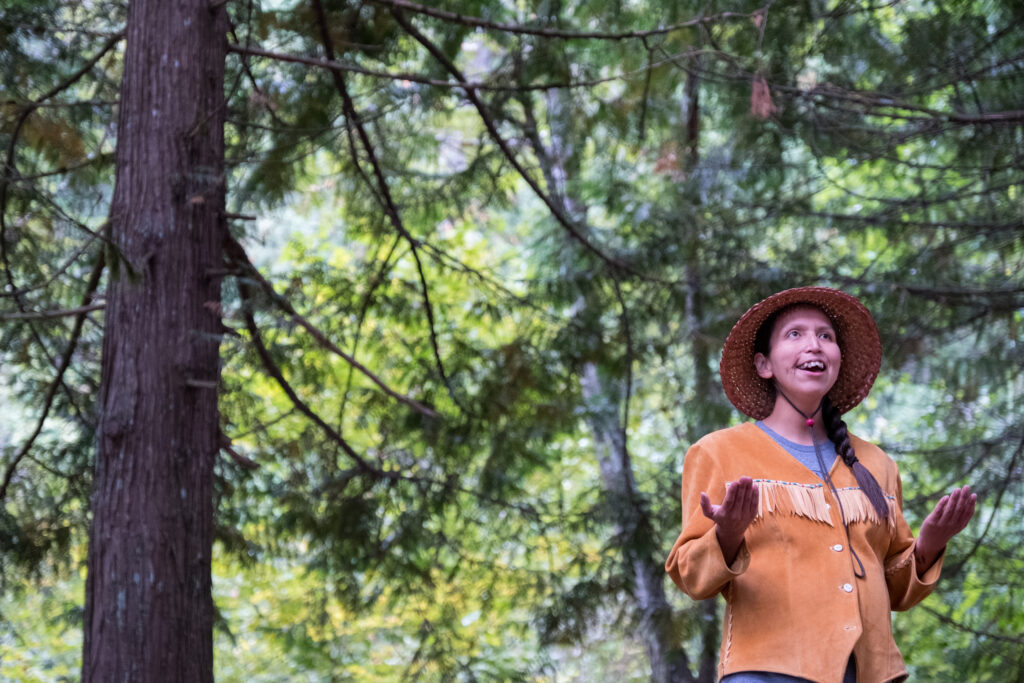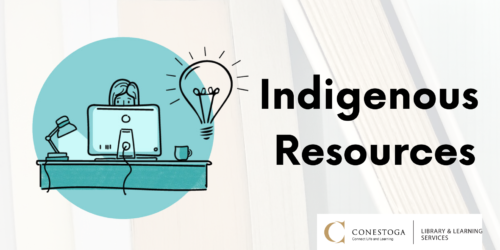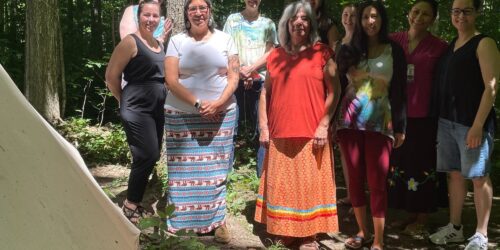Delivering Indigenous Land Acknowledgements

Author’s Acknowledgement
This post has been written from the perspective of a first-generation settler, living on the traditional lands of the Attawandaron, Anishinaabek, and Haudenosaunee Peoples, and the treaty lands of the Mississaugas of the Credit in Guelph, Ontario. This resource is a work in progress and is by no means exhaustive. I acknowledge the limitations that my social positionality places on this resource. One of these limitations, for example, is that as a settler, I cannot offer insight into hearing a land acknowledgement as an Indigenous person. My intentions in preparing this post is to take responsibility for my own learning on this topic, and contribute to the decolonization and Indigenization of post-secondary spaces. To amplify and incorporate Indigenous perspectives into this resource, research by Indigenous voices have informed this post.
Introduction
“There is room on this land for all of us and there must also be, after centuries of struggle, room for justice for indigenous peoples. That is all that we ask. We will settle for nothing less.”
Arthur Manuel, 2015
Indigenous leader, activist, and author
In line with the Truth and Reconciliation Commission Reports, land acknowledgements are a necessary single (but not sole) act towards reconciliation. In this post, I define land acknowledgements, their relevance and importance, and provide tips for conducting meaningful land acknowledgments. More specifically, this post aims to serve as a resource for faculty at Conestoga College to conduct land acknowledgements in the context of their teaching.
What is a land acknowledgement?
“Land acknowledgments are living entities formed by sacred breath that should be spoken from the heart and reflect humility, gratitude, respect, and responsibility toward place, fire, water, and air.”
Jan Sherman
Anishinaabe storyteller, culture keeper, and spiritual guide
Land acknowledgements have existed, and are practiced by various Indigenous communities, for many hundreds of years. Prior to the beginning of colonization by Europeans, Indigenous Peoples visiting other territories would show respect and pay homage to the stewards of the land (Calvez & Roberts, 2020; Currie, 2020). Today, land acknowledgements given by settlers are based on this Indigenous tradition (Indigenous Advisory Committee of Engineers Canada, 2021).
Why acknowledge the land?
“If we think of territorial acknowledgements as sites of potential disruption, they can be transformative acts that to some extent undo Indigenous erasure. I believe this is true as long as these acknowledgements discomfit both those speaking and hearing the words. The fact of Indigenous presence should force non-Indigenous peoples to confront their own place on these lands.”
Chelsea Vowel
Metis legal scholar, teacher, and intellectual
We acknowledge the land for several reasons, including the following reasons below:
- Recognize the ongoing history of colonialism and abuse of Indigenous Peoples, and to name the need for change in settler colonial societies
- Acknowledge our own positionality within colonialism
- Promote reflection upon and awareness of our relationship to the land
- Increase awareness of Indigenous Peoples and the original stewards of the land
- Inspire tangible acts towards strengthened relationships between Indigenous and non-Indigenous communities
Our intentions are important when acknowledging the land. As named by the Indigenous Advisory Committee of Engineers Canada (2021), when conducting land acknowledgements, we have a few “shoulds” and “should nots” in mind:
- Should not be the sole way and action towards truth and reconciliation
- Instead, land acknowledgements should be one of many tangible actions towards truth and reconciliation
- Should not be a political statement or a “performance of good intentions, without commitments and actions to facilitate meaningful change” (p. 3)
- Instead, land acknowledgements should be personalized; they should reflect your tangible commitments to learning about Indigeneity and the steps you have and will take towards truth and reconciliation
- Should not threaten non-Indigenous and/or Indigenous Peoples
- Instead, land acknowledgements should be one (albeit small) of many ways to actively foster and reconcile relationships between non-Indigenous and Indigenous Peoples
- Should not speak for, represent, or appropriate Indigenous knowledge, practices, ideas, or communities
- Instead, land acknowledgements should focus on your journey: a way for you to reflect on and speak about your relationship to the land and the steps you’ve taken so far (and plan to continue to take) towards truth and reconciliation
For more on what else one should consider when conducting land acknowledgements, check out the next section.
How to conduct and use a land acknowledgement
“By recognizing the intimate relationship between the place and people, you are demonstrating that you understand what is important and that you are trustworthy. To do this, you must use your own voice and provide the Land Acknowledgement from your heart.”
Stryker Calvez, PhD & Rose Roberts, PhD
Manager of Indigenous Education Initiatives & Indigenous Educational Developer
University of Saskatchewan
Below are some steps to follow and considerations to make when conducting land acknowledgements.
Learn about the First Peoples on the land
The first step in acknowledging the land is to learn more about the original stewards of the land. To learn about the First Peoples, treaties, and territorial agreements associated with the land, check out Whose Land or Native Land Digital.
Pronunciation
There are approximately 634 Indigenous, First Nations, Inuit, and Metis communities in this country. And, each community comes not only with its own distinct culture and traditions, but also language. Many may not be familiar with the appropriate pronunciation when conducting land acknowledgements.
At Conestoga College, we are on the traditional territory of the Anishnawbe (Ah-nish-nah-bay), Haudenosaunee (Ho-deh-no-show-nee), and Neutral Peoples.
To near name pronunciation, you may do a google search, being mindful to prioritize indigenous pronunciation. Here is a sample resource to pronounce Anishinaabe.
Your Positionality
In a meaningful land acknowledgement, it is good practice to incorporate your positionality. This could include acknowledging your background, history with this area of Canada, your relationship to Indigenous Peoples in this area/country, and your social position within ongoing colonialism. In doing this, you may want to reflect on some questions:
- what are aspects of your history and/or heritage that are relevant to this land?
- how did you come to live on this land or call this land home?
- which Indigenous Peoples were the original stewards of this land?
Personalization
In teaching, we want to tie our land acknowledgement to our discipline, field, and/or specific topic of the lesson. You may want to ask yourself how this land acknowledgement relates to the course topic, your profession, and/or your industry. For instance, if you are teaching about sustainability goals in your industry, your comments might relate to the ways that Indigenous Peoples have engaged in sustainable land practices since time immemorial.
Action-Orientated and Learning-Focused
A key approach in making land acknowledgements meaningful, is to commit to continued learning through actions. You may want to use your land acknowledgement to draw attention to Indigenous creations, resources, voices, and/or leaders in your disciplines or fields. Or incorporate relevant Indigenous initiatives, movements, or projects. Whatever you choose, it is good practice to share some of your learnings and commit to further actionable items to move towards Truth and Reconciliation.
I conclude this post with two poems to reflect on, as these words may be useful to prompt insight and thought in personalizing our own land acknowledgements.
I’d like to acknowledge that we are on stolen land. I’d like to acknowledge that we are on borrowed land. I’d like to acknowledge that we are on overdue land. I’d like to acknowledge that we are on pickpocketed land. *** I’d like to acknowledge academic colonialism. I’d like to acknowledge activist colonialism. I’d like to acknowledge that we are on bureaucratic land. I’d like to acknowledge poetic colonialism. - Clint Burnham, 2010
I am living in a city – “often called the Limestone City” – says the City of Kingston I am spending my days in limestone buildings I sit inside many “of the many charming limestone buildings,” says the city, “many of which help tell the story of Canada” These charming limestone walls – this charming city – build from quarries Quarried from the lands of Haudenosaunee and Anishinaabe people Built from the lands of the Haudenosaunee, the Anishinaabe Structured by colonial design to allay anxieties of impermanence - Dylan Robinson, 2021
Want to learn more about how your teaching practice ties to core teachings of Indigenous Peoples of Canada? Check out our Awareness of Indigenous Values, Identity, and Spirit micro-credential.
References
Burham, C. (2010). Excerpt from No Poems on Stolen Native Land.
Calvez, S. & Roberts, R. (2020). Land Acknowledgements. University of Saskatchewan: Teaching & Learning. Retrieved from: https://teaching.usask.ca/curriculum/indigenous_voices/land-acknowledgements/module.php
Currie, J. (Oct. 31, 2020). Reconcili-Action: Land acknowledgements. Honouring Indigenous Peoples. Retrieved from: https://honouringindigenouspeoples.com/reconciliaction-land-acknowledgements/
Indigenous Advisory Committee of Engineers Canada. (Nov, 2021). A Guide to Acknowledge First Peoples and Traditional Land: Land Acknowledgements for Staff and Volunteers. Retrieved from: https://engineerscanada.ca/sites/default/files/2021-11/Land%20Acknowledgement%20-%20EN%20-%20November%202021%20Update.pdf
Manuel, A. (2015). Unsettling Canada: A National Wake-Up Call. Toronto, ON: Between the Lines.
Robinson, D., Hill, K. J. C., Ruffo, A. G., Couture, S., & Ravensbergen, L. C. (2019). Rethinking the Practice and Performance of Indigenous Land Acknowledgement. Canadian Theatre Review, 177, pp. 20-30.
Sherman, J. (July 31, 2020). Guelph Guide of Storytellers. Retrieved from: https://www.guelphstorytellers.com/events/virtualitea-and-tales-via-zoom/2020-roster-of-tellers-season-cancelled/jan-sherman
Vowel, C. (2016). Indigenous Writes: A Guide to First Nations, Metis, & Inuit Issues in Canada. Winnipeg, MB: Highwater Press.



